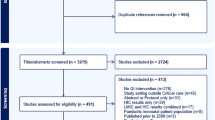Abstract
Background
The Acute Surgical Assessment Unit (ASAU) in University Hospital Limerick (UHL) has provided a solution to overcrowding and long waiting times since centralization of emergency services to UHL. Recognising the importance of its evolving role, the ASAU in UHL has recently undergone a major revamp to ease the pressure in the overcrowded emergency department (ED). This included a new purpose state-of-the-art-built unit and equipment, improved staffing levels and use of a Kaizen Lean system to identify key area of delays and inefficiency with subsequent implementation of suggestions derived after Kaizen Lean. Patient satisfaction reporting was analysed in the older building and subsequently in the new site post Kaizen Lean to complete a closed-loop audit. The aim of the study was to examine patient satisfaction response rates with the ASAU prior to and following Kaizen Lean implementation and transfer to a new purpose-built unit.
Methods
The survey comprised of two phases. In phase 1, 100 questionnaires were distributed to patients in ASAU (older building, pre-Kaizen Lean). In phase 2, the survey was repeated (100 patients) after Kaizen Lean implementation and transfer to the new state-of-the-art unit. Questionnaire design was based on WHO strategy on responsiveness measurement guidelines and was tailored to a population of surgical patients. Results were analysed using IBM SPSS, version 21 and Excel 2013.
Results
Two hundred questionnaires were analysed. Implementation of suggestions derived post Kaizen Lean translated into improved resource usage with reduced waiting time to be seen by nurses and doctors. Patients had better awareness about their treatment plan and planned next steps in the management. Satisfaction across different domains, perceptions of privacy and overall treatment were also improved.
Conclusions
A Kaizen Lean approach improved the transition of an ASAU to a new purpose-built unit and further improved overall patient satisfaction with services of the ASAU.
Similar content being viewed by others
References
Yellen E, Davis GC, Ricard R (2002) The measurement of patient satisfaction. Journal of Nursing Care Quality [Internet];16(4). Available from: https://journals.lww.com/jncqjournal/Fulltext/2002/07000/The_Measurement_of_Patient_Satisfaction.5.aspx
al Qatari G, Haran D (1999) Determinants of users’ satisfaction with primary health care settings and services in Saudi Arabia. Int J Qual Health Care 11(6):523–531
Dagger TS, Sweeney JC (2006) The effect of service evaluations on behavioral intentions and quality of life. J Serv Res 9(1):3–18
http://www.rcsi.ie/files/surgery/docs/20170922121629_ASAU-Standard.pdf
What is the difference between Kaizen, Lean & Six Sigma? [Internet]. Available from: https://in.kaizen.com/blog/post/2015/09/11/what-is-the-difference-betweenkaizen-lean%2D%2Dsix-sigma.html
Jacobson GH, McCoin NS, Lescallette R, Russ S, Slovis CM (2009) Kaizen: a method of process improvement in the emergency department. Acad Emerg Med 16(12):1341–1349
Health system responsiveness [Internet]. Available from: http://www.who.int/responsiveness/en/
Model of Care for Acute Surgery National Clinical Programme in Surgery [Internet]. Available from: http://www.rcsi.ie/files/surgery/20131216021838_Model%20of%20Care%20for%20Acute%20Surger.pdf
Schoenfelder T, Klewer J, Kugler J (2011) Determinants of patient satisfaction: a study among 39 hospitals in an in-patient setting in Germany. Int J Qual Health Care 23(5):503–509
https://in.kaizen.com/blog/post/2015/09/11/what-is-the-difference-between-kaizen-lean%2D%2Dsix-sigma.html
Radnor ZJ, Holweg M, Waring J (2012) Lean in healthcare: the unfilled promise? Soc Sci Med 74(3):364–371
Donabedian A (1988 Sep 23) The quality of care: how can it be assessed? JAMA 260(12):1743–1748
Dickson EW, Singh S, Cheung DS, Wyatt CC, Nugent AS (2009) Application of lean manufacturing techniques in the emergency department. The Journal of Emergency Medicine 37(2):177–182
Otani K, Waterman B, Faulkner KM, Boslaugh S, Dunagan WC (2010) How patient reactions to hospital care attributes affect the evaluation of overall quality of care, willingness to recommend, and willingness to return. J Healthc Manag 55(1)
Freeman T (2016) Using performance indicators to improve health care quality in the public sector: a review of the literature. Health Serv Manag Res 15(2):126–137
Ullah MF, Fleming CA, Mealy K (2019) Ir J med Sci. https://doi.org/10.1007/s11845-019-02062-z
Author information
Authors and Affiliations
Corresponding author
Ethics declarations
Conflict of interest
The authors declare that they have no competing interests.
Ethical approval
This article does not contain any studies with human participants performed by any of the authors.
Additional information
Publisher’s note
Springer Nature remains neutral with regard to jurisdictional claims in published maps and institutional affiliations.
Rights and permissions
About this article
Cite this article
Ullah, M.F., Fleming, C., Fox, C. et al. Patient experience in a surgical assessment unit following a closed-loop audit using a Kaizen Lean system. Ir J Med Sci 189, 641–647 (2020). https://doi.org/10.1007/s11845-019-02105-5
Received:
Accepted:
Published:
Issue Date:
DOI: https://doi.org/10.1007/s11845-019-02105-5




